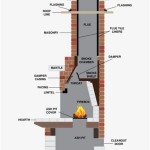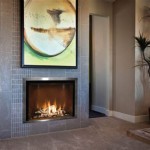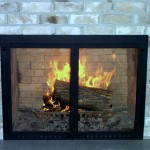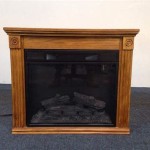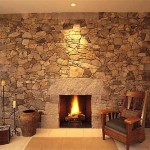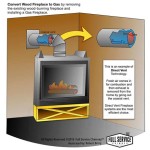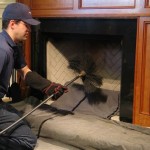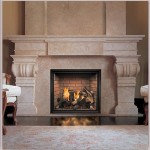Chimney Sweep and Fireplace Repair: Ensuring Safety and Efficiency
The hearth, since time immemorial, has been a central gathering place, providing warmth, comfort, and a focal point for the home. Modern fireplaces, while often designed with aesthetics in mind, continue to serve this fundamental purpose. However, like any mechanical system, fireplaces and their chimneys require regular maintenance and occasional repair to function safely and efficiently. Neglecting these vital services can lead to hazardous situations, reduced heating efficiency, and costly property damage. Chimney sweeping and fireplace repair are therefore essential for homeowners who rely on these appliances for heating or ambiance.
This article aims to provide a comprehensive overview of chimney sweeping and fireplace repair, highlighting the importance of these services, outlining common issues, and detailing the processes involved. Understanding the nuances of these practices will empower homeowners to make informed decisions regarding the upkeep of their fireplaces and chimneys, ensuring the safety and longevity of their heating systems.
The Importance of Regular Chimney Sweeping
Chimney sweeping involves the removal of accumulated debris from the interior of the chimney flue. This debris primarily consists of creosote, a highly flammable byproduct of incomplete combustion. Creosote buildup poses a significant fire hazard, as even a small spark can ignite the accumulated layers, leading to a potentially devastating chimney fire. The type of fuel used in the fireplace significantly impacts the rate of creosote accumulation. Burning softwoods, for example, tends to produce more creosote than burning hardwoods.
Beyond the fire risk, creosote buildup can also obstruct the flue, hindering the proper venting of smoke and combustion gases, including carbon monoxide. Carbon monoxide is an odorless, colorless, and deadly gas that can seep into the home if the chimney is blocked. Regular chimney sweeping ensures a clear pathway for these gases to escape, protecting occupants from carbon monoxide poisoning. The National Fire Protection Association (NFPA) recommends that chimneys be inspected at least once a year, and swept as needed, based on usage and fuel type.
Furthermore, accumulating nests of animals such as birds, squirrels, and raccoons can also block the chimney flue. These blockages can similarly impede the proper venting of smoke and gases, leading to both fire hazards and carbon monoxide risks. A professional chimney sweep will be able to identify and remove such obstructions safely and effectively.
Improperly sized or installed chimney liners can also contribute to creosote buildup and venting problems. A chimney liner is a tube, typically made of metal or ceramic, that lines the inside of the chimney. It protects the masonry from the corrosive effects of combustion gases and helps to ensure proper draft. A damaged or improperly sized liner can create areas where creosote accumulates rapidly, increasing the risk of chimney fires.
The frequency of chimney sweeping depends on several factors, including the type of fuel burned, the frequency of fireplace use, and the efficiency of the appliance. For wood-burning fireplaces that are used regularly, annual chimney sweeping is generally recommended. For gas fireplaces, which produce less soot and creosote, sweeping may be required less frequently, but annual inspections are still crucial to detect any potential issues.
Common Fireplace Repair Issues and Solutions
Fireplaces, subjected to high temperatures and corrosive byproducts, are susceptible to a range of repair issues. These issues can range from minor cosmetic damage to significant structural problems that affect the safety and functionality of the fireplace. Addressing these issues promptly is crucial to prevent further deterioration and ensure the safe operation of the fireplace.
One common problem is damaged or cracked firebricks. Firebricks are the refractory bricks that line the inside of the firebox, protecting the surrounding masonry from the intense heat of the fire. Over time, these bricks can crack or crumble due to thermal stress and repeated exposure to high temperatures. Replacing damaged firebricks is essential to maintain the structural integrity of the firebox and prevent heat from transferring to combustible materials surrounding the fireplace.
Another frequent issue is a damaged or deteriorating damper. The damper is a metal plate located in the chimney flue that regulates airflow. When the fireplace is in use, the damper is opened to allow smoke and combustion gases to escape. When the fireplace is not in use, the damper is closed to prevent drafts and heat loss. A damaged damper can allow cold air to enter the home, increasing heating costs, or it can prevent the proper venting of smoke and gases, leading to indoor air pollution.
Cracks in the chimney crown, the concrete slab that covers the top of the chimney, are also a common problem. The crown protects the chimney from water damage. Water can seep into the chimney through cracks in the crown, leading to deterioration of the masonry and damage to the interior of the home. Repairing or replacing a damaged chimney crown is essential to prevent water damage and maintain the structural integrity of the chimney.
Spalling, the crumbling or flaking of brick or stone, is another common sign of chimney damage. Spalling is often caused by water absorption and freeze-thaw cycles. When water penetrates the masonry and freezes, it expands, causing the brick or stone to crack and spall. Repairing spalling involves removing the damaged brick or stone and replacing it with new material. Applying a sealant to the chimney can help to prevent water absorption and reduce the risk of spalling.
Furthermore, issues with the fireplace's gas line or gas logs are not uncommon in gas fireplaces. Leaks, corrosion, or malfunctioning igniters can all affect the safe and efficient operation of the fireplace. These issues should only be addressed by a qualified technician with experience in gas appliance repair.
The Chimney Sweeping and Fireplace Repair Process
The process of chimney sweeping typically involves several steps. First, the chimney sweep will inspect the fireplace and chimney to assess the condition of the system and identify any potential problems. This inspection may include using a video camera to examine the interior of the flue. Next, the chimney sweep will protect the surrounding area with drop cloths to prevent dust and debris from spreading. The actual sweeping process involves using specialized brushes and tools to dislodge creosote and other debris from the chimney walls. The dislodged debris is then collected and removed from the premises.
The repair process varies depending on the specific issue. For firebrick replacement, the damaged bricks are carefully removed and replaced with new firebricks. The new bricks are typically set in place with refractory mortar, a heat-resistant mortar specifically designed for fireplace applications. Damper repair may involve cleaning and lubricating the damper mechanism, or it may require replacing the entire damper assembly. Chimney crown repair may involve patching cracks with a sealant or applying a new layer of concrete to the crown. Spalling repair involves removing the damaged brick or stone and replacing it with new material, using appropriate mortar for the type of masonry being repaired.
Safety is paramount throughout both processes. Chimney sweeps and fireplace repair technicians should use appropriate personal protective equipment, including respirators, gloves, and eye protection. They should also follow all applicable safety codes and regulations. Homeowners should ensure that they are hiring qualified and experienced professionals who are licensed and insured to perform chimney sweeping and fireplace repair services.
After the sweeping or repair is complete, a thorough inspection should be conducted to ensure that the system is functioning properly and safely. This inspection may include a smoke test to verify that the chimney is drafting correctly and that there are no leaks in the flue. The technician should also provide the homeowner with a written report detailing the work performed and any recommendations for future maintenance or repairs. This documentation is crucial for maintaining a record of the fireplace's maintenance history and for insurance purposes.
In conclusion, regular chimney sweeping and prompt fireplace repair are essential for ensuring the safety and efficiency of these heating systems. By understanding the importance of these services, recognizing common issues, and entrusting the work to qualified professionals, homeowners can enjoy the warmth and comfort of their fireplaces while minimizing the risk of fire hazards and other problems.

Fireplace Install In Glenwood Md Chimney Repair Sweep

Chimney Service In Rockville Md We Sweep Repair Chimneys

Chimney Sweep Repairs Fireplace Repair Installs

Chimney Repair In Severna Park Gas Inserts Fireplaces

Hagerstown Md Chimney Service Heating Stove Fireplace Repair

Chimney Cleaning In Amherst Ny Repair Fireplace Installation

Chimney Cleaning Mistakes Dc Area Certified Sweeps

Chimney Sweep Repair Salt Lake City Ut Chim

Chimney Sweep Repair Mr Pro Services Denver Colorado

The Definitive Guide To Chimney Inspection And Repairs Chimcare
Related Posts

